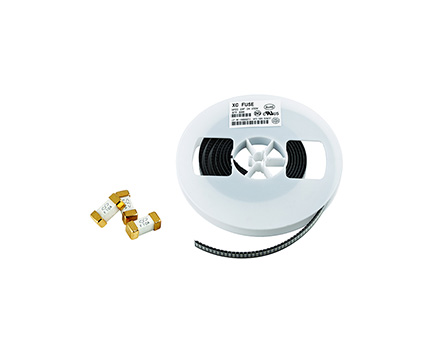
The self recovery fuse is composed of specially treated polymer resin and conductive particles (Carbon Black) distributed inside. Under normal operation, the polymer resin tightly binds conductive particles outside the crystalline structure, forming a chain like conductive electrical pathway. At this time, the recoverable fuse is in a low resistance state (a), and the heat generated by the current flowing through the self recovering fuse on the circuit is small and does not change the crystal structure. When a circuit experiences a short circuit or overload, the heat generated by the large current flowing through the self recovery fuse causes the polymer resin to melt, rapidly increase in volume, and form a high resistance state (b). The working current rapidly decreases, thereby limiting and protecting the circuit. After the fault is eliminated, PTC can restore the fuse to cool and crystallize again, shrink the volume, and the conductive particles form a conductive path again. The self restoring fuse returns to a low resistance state, thus completing the protection of the circuit without the need for manual replacement.
Application scope
Communication equipment: Stored program control, user terminal equipment, general wiring security unit, etc.
Automotive electronics: automotive wiring harnesses, automotive anti-theft devices, automotive micro motors, automotive electronic products, etc.
Electronics industry: power ballasts, micro motors, fire alarms, instruments and meters, etc.
Electrical equipment: satellite receivers, security equipment, speakers, industrial automatic control, etc.
Read recommendations:
Thermal cutoff NEC.best hair thermal protector
tv fuse blows when plugged in.The impact of fuse aging on usage